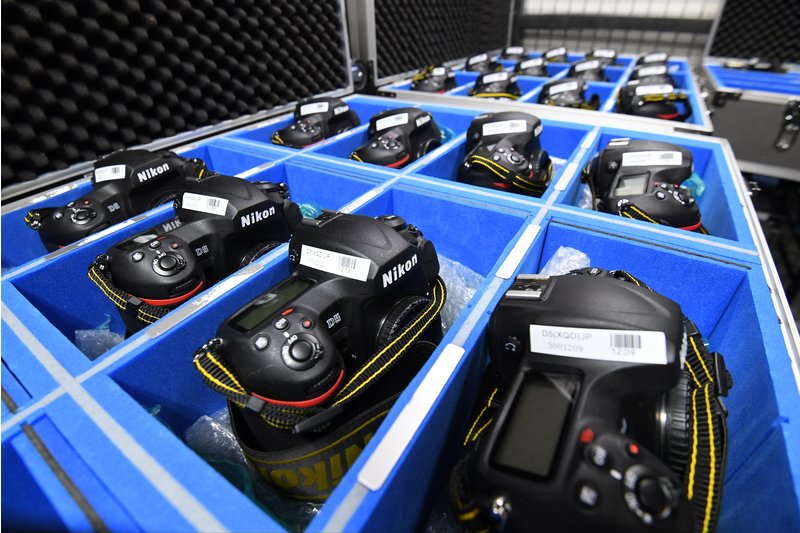無反相機大行其道,,佳能尼康地位岌岌可危
無反相機的成像質量仍然無法與單反相機媲美,,但價格卻相對低廉很多。

|
如果你是一個市場領導者,你的領域出現了某種具有潛在顛覆性的創(chuàng)新,,你得多快做出反應,,才能避免被掀下市場領導者的寶座,?作為一個業(yè)余攝影師的筆者,,今天就來探討一下相機巨頭尼康和佳能的命運,。 我的第一部佳能相機是一臺型號為AT-1的乞丐版膠片機,它是很多年前我的成年禮物,。不過佳能主打的客戶群一向是專業(yè)攝影師群體,,他們不惜一擲千金購買那種炮筒鏡頭的大塊頭專業(yè)相機。尼康和佳能并稱相機界雙雄,,地位相當于可樂界的百事和可口可樂,。只不過幾十年來,這兩家公司都把主要精力放在了單反市場上,。 根據哈佛教授克萊頓·克里斯蒂森教授的“顛覆理論”,,隨著市場領導者持續(xù)提升產品性能,它的產品往往會超過一些消費者的實際需求,,造成性能過剩,。而新進者往往能以較低的價格和中端的配置滿足這些被忽視的用戶的需求。根據克里斯蒂森2015年發(fā)表的一篇關于“顛覆理論”的論文,,坐在市場頂端的守成者往往會滿足于自己的品質優(yōu)勢,,而“不去積極地做出回應”。(當然,,近年來克里斯蒂森的“顛覆理論”也遭到了一些合理批評,。) 雖然相機市場已經進入了數碼時代,,但佳能和尼康的優(yōu)勢仍在,,因為膠片機時代的相機鏡頭仍能用在新款的數碼單反相機上,。而與此同時,智能手機的崛起幾乎已徹底摧毀了消費級的傻瓜相機市場,。另外從大約10年前開始,,已經有一些競爭者決定采取新的策略與佳能和尼康競爭。 單反相機又叫“單鏡頭反光式取景照相機”,,是指使用單鏡頭,,并且光線通過此鏡頭照射到反光鏡上,通過反光取景的相機,。這些競爭者沒有搞出自己的單反,,像松下、奧林巴斯等廠商推出的相機都是只依賴數字傳感器技術,。這些“無反”相機的尺寸和重量都小于傳統(tǒng)的單反相機,,它們的鏡頭也是可以互換的,不過其成像質量仍然無法與單反相機媲美,,但價格卻相對低廉很多,。沒過多久,索尼,、三星和富士也相繼推出了更好的無反相機,。 面對無反相機的來勢洶洶,佳能和尼康一開始基本上是無視的,,他們依然在努力改進巨大的單反相機,,并添加了更多的感光元件以捕捉更多的像素。不過隨著無反相機銷量的增長,,尼康終于按捺不住推出了自家的無反相機,,佳能也迅速跟進,然而二者的產品反響只是平平,。很顯然,,作為市場領導者的佳能和尼康都不希望他們的專業(yè)用戶群放棄購買高價格的單反,轉而購買低利潤的無反,。 正如克里斯蒂森所預測的那樣,,只要銷量上去了,無反相機技術水平的增長是自然而然的事,。近年來,,索尼、富士和奧林巴斯都吸引了越來越多的“真正”的攝影師前來投奔,。去年,,日本的單反相機銷量下跌了10%,而無反相機的銷量上升了29%?,F在佳能和尼康終于意識到了無反相機的威脅,,開始認真考慮研發(fā)專業(yè)級的無反相機了,。幾周前,佳能公司的一名高管向《日經亞洲評論報》表示,,該公司必須“積極推出面向增長市場的產品,,哪怕會帶來一些產品撞車的問題?!奔涯艿男庐a品預計今年下半年就將推出,,問題是,他們是否已經觀望得太久了,。(財富中文網) 譯者:樸成奎? |
How long should a market leader let a potentially disruptive innovation go before reacting? Amateur photog Aaron in for Adam today, contemplating the fate of camera titans Nikon and Canon. I got my first Canon camera, a no-frills film model known as the AT-1, as a gift for my bar mitzvah many years ago, but the company’s major market has always been professional photographers who spend thousands of dollars on the hefty bodies and gigantic lenses that bring in the big bucks. Nikon was the Pepsi to Canon’s Coke, or maybe the other way around, but the two companies had a lock on the high-end market of single-lens reflex, or SLR, cameras for decades. In Harvard professor Clayton Christensen’s well-trodden disruption theory, as a market leader continues to improve its product, it goes beyond meeting the needs of what some customers actually want. New entrants with a new technology arrive, usually at a lower price and with fewer capabilities, aiming to meet the need of those overlooked customers. The incumbents, satisfied that their advantage in quality is what matters most “tend not to respond vigorously,” Christensen wrote in a 2015 article explaining and defending his theory (which has come in for some legitimate criticism over the years). Even when the camera market went digital, the advantages of owning a Canon or Nikon remained, as new digital SLR models were compatible with lenses from the prior analog film models. At the same time, the rise of smartphones has nearly destroyed the market for pocket-size consumers cameras. So starting almost exactly 10 years ago, some competitors decided to try a new tactic to compete. Instead of selling their own SLRs, which use a mirror and prism mechanism to allow a scene to be viewed by the photographer and recorded on film, Panasonic, Olympus, and others started selling smaller cameras that relied just on digital sensors. Without the mirror and prism contraption, these “mirrorless” cameras could be much smaller and lighter than traditional SLRs. They still came with interchangeable lenses, but the picture quality couldn’t match the SLRs. Prices were much lower, however. Soon, Sony, Samsung and Fujifilm were making even better mirrorless cameras. Canon and Nikon largely ignored the trend. They were still making hay with their gigantic SLR models, adding ever more sensitive sensors to capture even more pixels. But as sales of mirrorless cameras increased, first Nikon and eventually Canon introduced their own models, to mainly mediocre reviews. The market leaders appeared not to want to tempt any of their pro audience away from buying higher-priced SLRs. Just as Christensen’s predicted, the cheaper technology improved and lately Sony, Fuji, and Olympus have been tempting a growing number of “real” photographers to defect. In Japan last year, sales of SLR models dropped 10% and mirrorless sales increased 29%. Now Canon and Nikon are waking up to the threat and planning serious, professional-grade mirrorless models. A top Canon exec told the Nikkei Asian Review a few weeks ago that the company must “actively roll out products for a growth market even if there is some cannibalization.” The new models should arrive in the second half of this year, but the question now is whether they waited too long.? |













